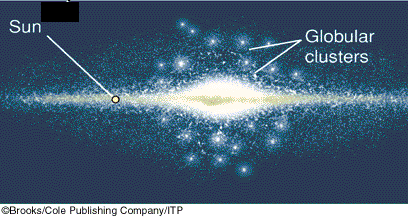
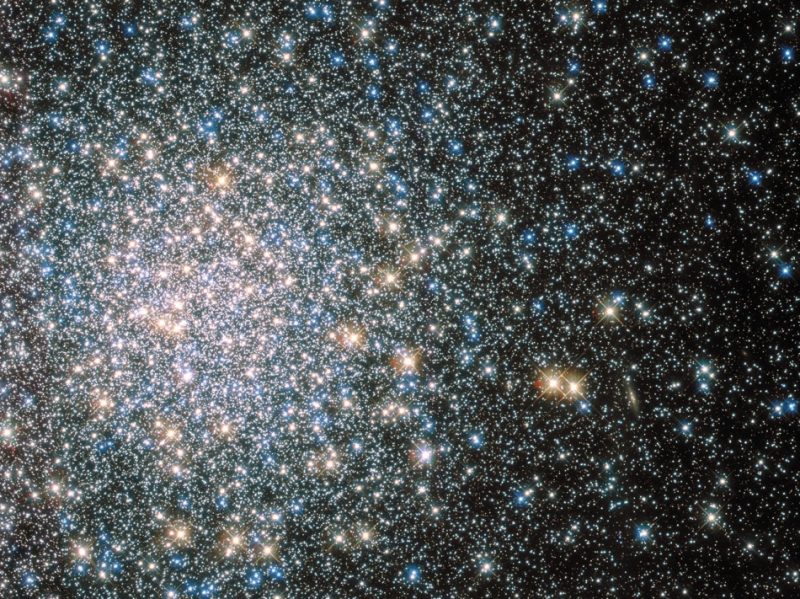
The globular cluster M5, as seen by the Hubble Space Telescope. This photo was an Astronomy Picture of the Day in June 2015. Via HST/ NASA/ ESA/ APOD.
Globular clusters are tightly packed, symmetrical collections of up to about a million stars, orbiting mostly in the star halos surrounding most spiral galaxies. Globular clusters contain some of the oldest stars in a galaxy and are thought to have formed early in its history. Could it be that – when it was first forming – a spiral galaxy like our Milky Way was once an amorphous cloud of gas and dust? Could its first stars have collected into globular clusters? Could these clusters have stayed put in the halo around a galaxy’s center, as the rest of the galaxy flattened out and formed spiral arms? That scenario would explain why globular clusters orbit in a galaxy’s halo and contain a its oldest stars.
But the fact is that no one knows precisely how globular clusters formed, and what role, if any, they played in the development of galaxies. We do know that globular clusters are the oldest, largest and most massive type of star cluster and that they contain the oldest stars. Their age can be demonstrated by their almost complete lack of gas and dust, all of which has presumably been incorporated into stars.
Globular clusters are big. They can reach 300 light-years in diameter. Unlike the open star clusters – containing a few hundred young, sibling stars, scattered through the disk of our galaxy and presumably other galaxies – globular clusters are big, symmetric and old, like an earthly city’s oldest and most staid citizens.
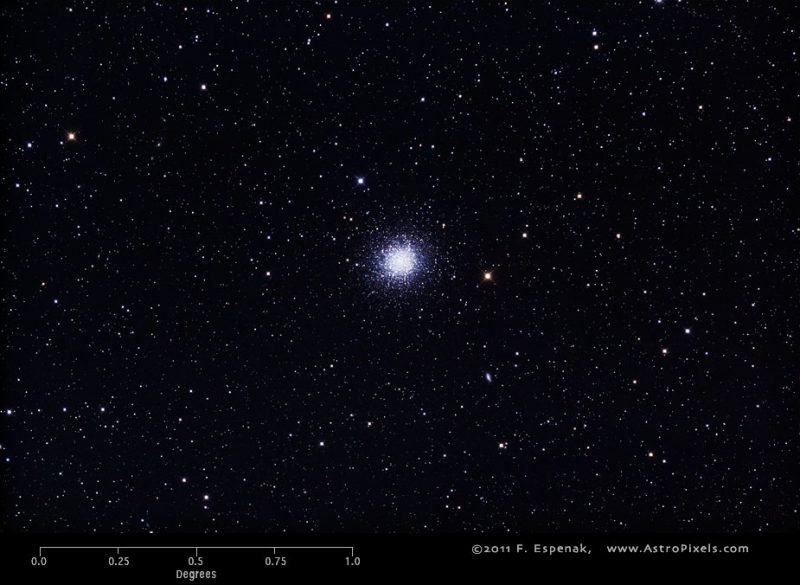
View larger. | The famous globular cluster Messier 13 or M13 – largest and brightest globular cluster easily visible from the Northern Hemisphere – seen against its star field. At 25,000 light-years away and about 145 light-years in diameter, M13 is a popular target for amateur astronomers using small telescopes. Image via Fred Espenak.
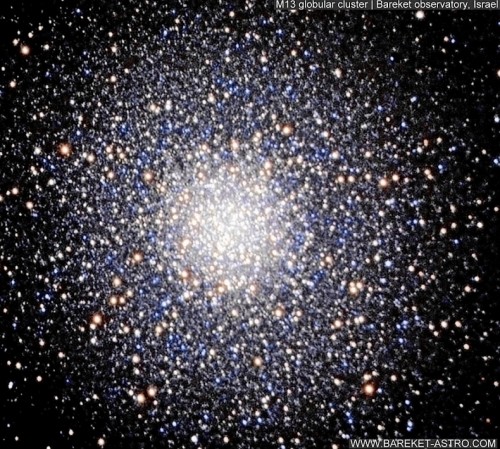
Here is M13 again. Notice its very symmetrical structure, which is typical of globular star clusters. Photo via Bareket Observatory in Israel, via CelestronImages.
Our own Milky Way has around 150 globular clusters, with perhaps more awaiting discovery, hidden by galactic dust. Our neighboring spiral galaxy in the direction of the constellation Andromeda – M31 or the Andromeda galaxy – appears to have around 300 globular clusters. Some football-shaped, elliptical galaxies do have globular clusters, too, like M87 in the direction of the constellation Virgo, home to the supermassive black hole that was famously imaged by the Event Horizon Telescope in 2019. This giant elliptical galaxy, M87, has been estimated to possess around 15,000 globular clusters, with more than 1,000 having been directly observed telescopically so far.
Globular clusters orbit galaxies in orbits which are highly eccentric and highly inclined to the galactic plane. Orbiting in the “outskirts” of a galaxy, they take perhaps a few hundred million years to complete a single orbit. In a telescope, a globular cluster looks like a fuzzy ball, with individual stars at the periphery merging into a solid ball of light towards the center. However, this is simply because the stars are so close together that they can’t be resolved individually telescopically. At the center of a globular cluster, stars may reach a density of between 100 and 1,000 stars per cubic parsec. That’s in contrast to the density of stars near our sun, estimated at about 0.14 star per cubic parsec. If you were standing on a planet orbiting a star in a globular cluster, your night sky would be extremely crowded with nearby stars!
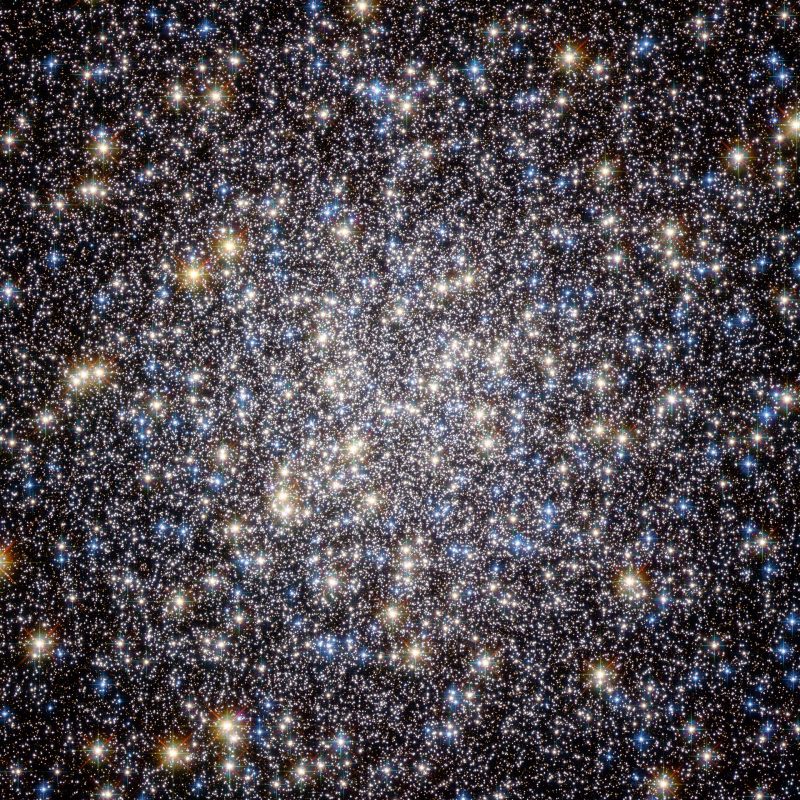
This Hubble Space Telescope image shows the core of the great globular cluster Messier 13, in the constellation Hercules. Read more about this image from SpaceTelescope.org.
The stars in globular clusters are the galaxy’s most ancient inhabitants, comprising a population of what astronomers call Population II stars. Those whose age has been measured are between 11 and 13 billion years old, making them almost as old as the galaxy itself. Not surprisingly, many of these ancient stars have evolved into huge, bloated red giant stars, as our sun will do in a few billion years. The stars are extremely metal-poor, which is to say – in the peculiar language of astronomy – they have tiny amounts of materials heavier than helium compared to the surrounding interstellar medium (astronomers refer to all elements heavier than helium as “metals”). Because the heavier elements are made inside stars – and then spread throughout the interstellar medium via supernova explosions – this paucity of metals is exactly what would normally be expected from such old stars. In other worlds, Population II stars consist almost exclusively of hydrogen and helium, the materials that were present in the early universe.
However, there is a mystery: globular clusters also have “abundance anomalies” of heavier metals, meaning there are elements present which are found elsewhere, in stars that formed more recently. In particular, there appears to be excesses of sodium, carbon, oxygen and aluminum, with heavier metals such as strontium, yttrium, barium and europium also being present in some clusters. These anomalies have not been satisfactorily explained, although there have been several explanations put forward, such as the early presence of supermassive stars .
The most famous globular cluster in the northern hemisphere is M13 in the constellation of Hercules, sometimes referred to as the Great Globular Cluster, which was discovered by Edmond Halley in 1714. Charles Messier later added it into his famous catalog in 1764. In amateur telescopes, it is a small fuzzy patch of light, some 22,000 light-years from Earth. At the center of this cluster, stars orbit so closely that occasionally they collide, their deaths leading to the creation of new stars known as “blue stragglers.” This stellar population is the only type of newer stars in globular clusters.
Other globular clusters of note are M22 in Sagittarius – one of the brightest in the sky – M5 in Serpens and M12 in Ophiuchus. Many of the night sky’s biggest and brightest globular clusters are best viewed on spring nights and often feature in so-called “Messier Marathons.”
Globular clusters are a wonderful sight in even the smallest telescopes, although a large instrument is needed to resolve individual stars towards their centers.
When you look at them, you are seeing populations of stars born in our galaxy’s infancy!
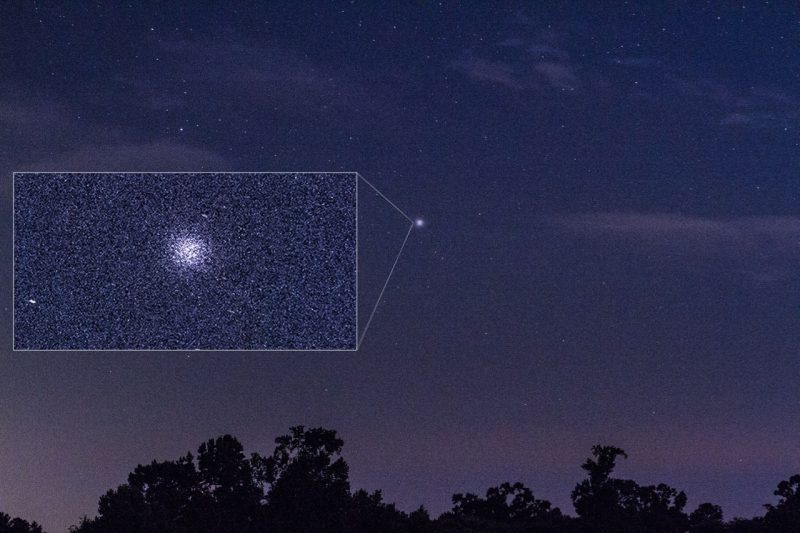
Amateur astronomers enjoy peering at globular clusters through their small telescopes. Here is Omega Centauri, captured by Greg Hogan in Kathleen, Georgia. Thanks, Greg!
Bottom line: Globular clusters are spherical collections of up to perhaps a million stars, orbiting mostly in the star halo of spiral galaxies and containing some of a galaxy’s oldest stars.
Source:
https://earthsky.org/space/definition-what-is-a-globular-cluster
